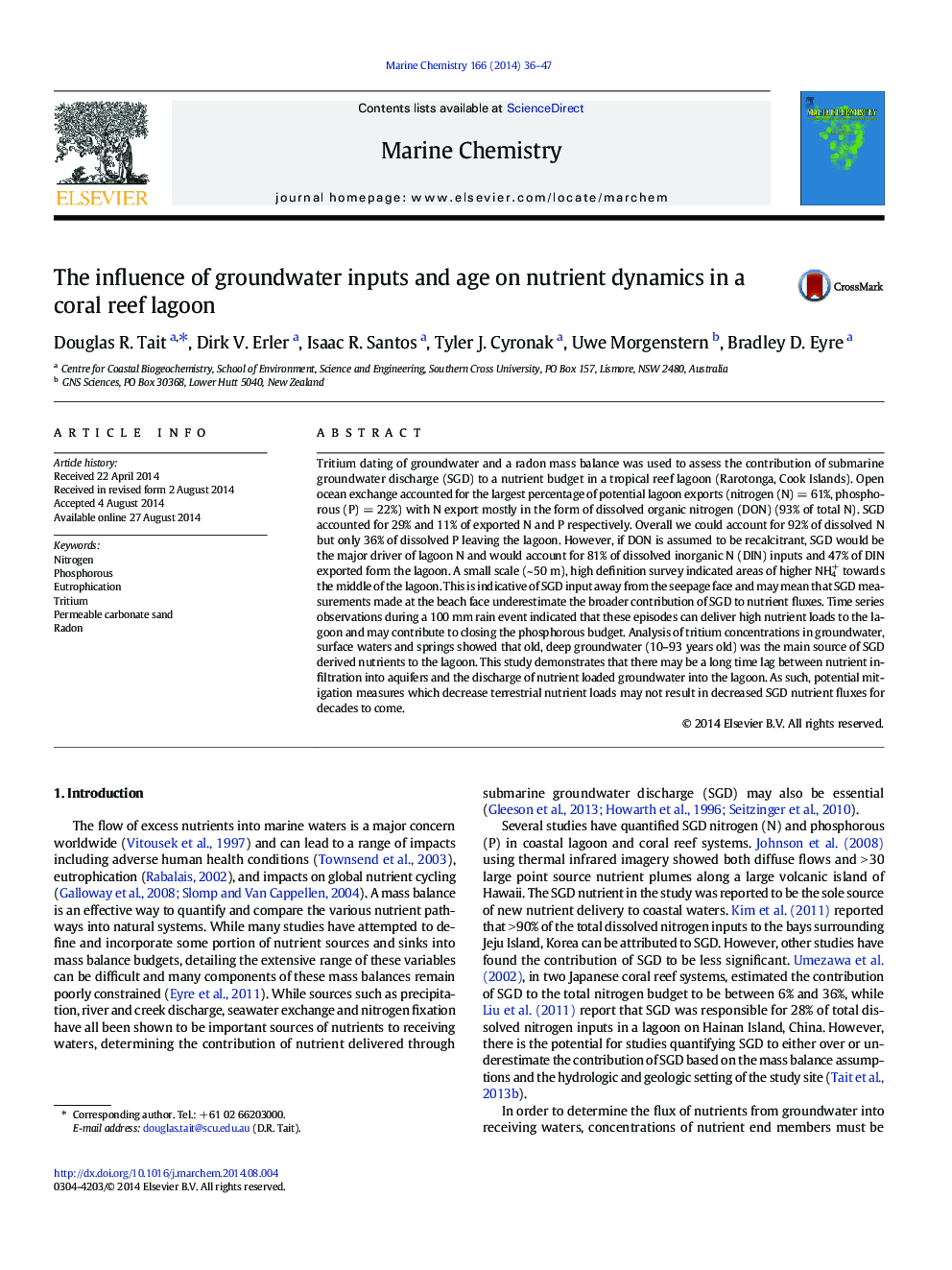| کد مقاله | کد نشریه | سال انتشار | مقاله انگلیسی | نسخه تمام متن |
|---|---|---|---|---|
| 1261277 | 1496669 | 2014 | 12 صفحه PDF | دانلود رایگان |
• SGD accounted for 81% of DIN inputs and 47% of DIN exported from the lagoon.
• The budget accounted for 92% of TDN but only 36% of TDP leaving the lagoon.
• Old, deep groundwater (10–93 years) was the main source of SGD N and P.
• Decreasing nutrient inputs may not reduce SGD nutrient fluxes for decades to come.
Tritium dating of groundwater and a radon mass balance was used to assess the contribution of submarine groundwater discharge (SGD) to a nutrient budget in a tropical reef lagoon (Rarotonga, Cook Islands). Open ocean exchange accounted for the largest percentage of potential lagoon exports (nitrogen (N) = 61%, phosphorous (P) = 22%) with N export mostly in the form of dissolved organic nitrogen (DON) (93% of total N). SGD accounted for 29% and 11% of exported N and P respectively. Overall we could account for 92% of dissolved N but only 36% of dissolved P leaving the lagoon. However, if DON is assumed to be recalcitrant, SGD would be the major driver of lagoon N and would account for 81% of dissolved inorganic N (DIN) inputs and 47% of DIN exported form the lagoon. A small scale (~ 50 m), high definition survey indicated areas of higher NH4+ towards the middle of the lagoon. This is indicative of SGD input away from the seepage face and may mean that SGD measurements made at the beach face underestimate the broader contribution of SGD to nutrient fluxes. Time series observations during a 100 mm rain event indicated that these episodes can deliver high nutrient loads to the lagoon and may contribute to closing the phosphorous budget. Analysis of tritium concentrations in groundwater, surface waters and springs showed that old, deep groundwater (10–93 years old) was the main source of SGD derived nutrients to the lagoon. This study demonstrates that there may be a long time lag between nutrient infiltration into aquifers and the discharge of nutrient loaded groundwater into the lagoon. As such, potential mitigation measures which decrease terrestrial nutrient loads may not result in decreased SGD nutrient fluxes for decades to come.
Journal: Marine Chemistry - Volume 166, 20 November 2014, Pages 36–47
